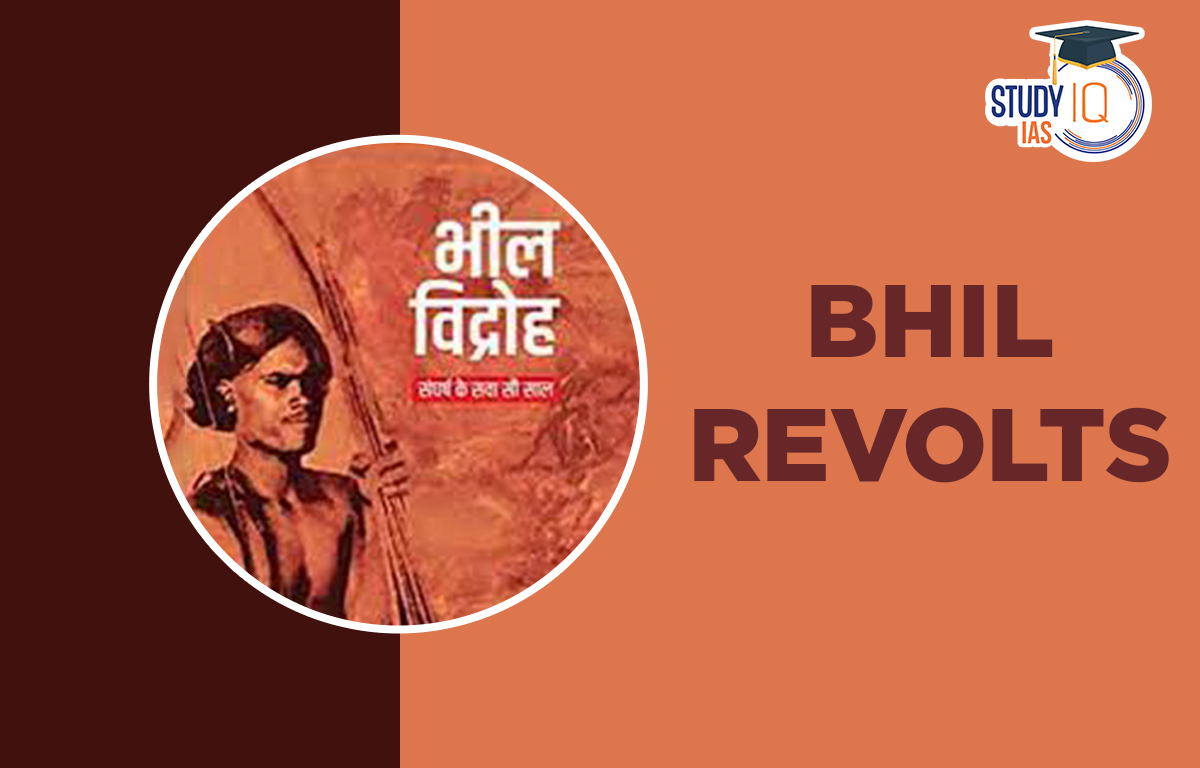Table of Contents
Bhil Revolt
One of the first British resistance actions that any clan or tribe in the nation took was the Bhil revolt in 1818. The Bhil Revolt of 1818 was one of the country’s earliest tribal group-led uprisings. The East India Company’s horrendous treatment of the Bhils, who were dispossessed of their long-standing forest rights and exploited, served as the impetus for the uprising.
The British deployed a force to put down the uprising in response, which they successfully did. Yet it wasn’t all for nothing; as a condition of the peace treaty, the British granted a number of tariff concessions and returned the rights to certain types of forest. For the UPSC examination, this article contains all the information about the Bhil Revolt.
Read More: Khond Uprisings
Bhil Revolt History
One of the first British resistance efforts that any tribe or tribes in the country adopted was the Bhil Rebellion in 1818. The British Empire and feudalism were the targets of the Rajputana uprising. The tribe had a long history of living in harmony, but changes to the British government and the feudal system led them to rebel against the government.
Several circumstances led to the revolts, and once the British arrived in India, some administrative changes occurred. The Bhil tribal people completely profited from numerous forest rights prior to these advances. In 1818, all of the Bhil tribal nations collaborated with the British government to sign a pact.
The British people adopted the position of the real ruler because they were now able to interfere and set policies in both the state’s internal and exterior affairs. The Bhils also lost their ability to use and eat a number of commodities that were abundantly produced in the forest. In the end, Colonel Walter, a British representative, made peace with the Aboriginal people. Native People were granted concessions regarding their access to the wilderness and their ability to pay various taxes.
Read More: Santhal Rebellion
Bhil Revolt Causes
The actual causes, however, were the above-mentioned discriminatory policies and the oppressive, superiority complex-infused attitude of the government towards the Bhils. Hence, when the Bhils of Mewar revolted in 1881, it was viewed as a threat. The Maharana responded quickly, presumably in an effort to atone for prior errors that he had made on the British’s counsel.
He granted the Bhils’ 21 requests at Rekhabdeo and stopped the British from intervening, which may have led to merciless suppression and further erosion of Mughal-Rajput confidence. Although the Bhil uprisings lacked coordination, Daulat Singh did show some effective leadership.
Read More: Munda Rebellion
Bhil Revolt Consequences
The British government dispatched troops to quell the Bhil insurrection of 1818 by stifling the opposition. The soldiers forced the Bhil warriors to swiftly submit, but it backfired since it increased animosity and hostility towards the British. Due to the ever-increasing challenges in the dense forest, the forces were unable to penetrate far into the forest to entirely put an end to the insurrection.
Meanwhile, the Mewar ruler’s aides unsuccessfully attempted to negotiate with the Bhils. Col. Walter, a British representative, eventually reached an agreement for peace with the tribes people. Native Americans received concessions over their rights to pay various taxes and their access to the forest. Even though the British claimed to have put an end to the revolt, they were never able to establish a state of permanent calm in the regions where the Bhils lived.
The Bhil insurrection is important in Indian history because it exposed the mistreatment of the tribesmen and attempts by outside troops to subjugate the locals. During the British colonial rule in India, the political consciousness of the Bhil community against the British raised awareness among other ordinary Indians.
Read More: Paharias Rebellion
Bhil Revolt Leader
A social reformer and Bhil leader from southern Rajasthan arose around the beginning of the twentieth century. Govind Guru was a religious leader who encouraged the Bhils to proudly uphold their traditions and fight against bonded labour. He also tried to eradicate societal evils including non-vegetarianism and the high frequency of alcohol use among the Bhil community. The Bhagat Andolan is the historical name for this movement.
Almost 1500 unarmed followers of Govind Guru were brutally murdered by the British troops in 1913 at the Mandalgarh Hill on the Rajasthan-Gujarat border, six years before the horrific Jallianwala Bagh massacre. The Mandalgarh Massacre, also known as the Forgotten Jallianwallah Bagh of Rajasthan, is a largely forgotten and terrible atrocity that occurred.
Bhil Revolt UPSC
The Bhil insurrection is important in Indian history because it exposed the mistreatment of the tribesmen and attempts by outside troops to subjugate the locals. During the British colonial rule in India, the political consciousness of the Bhil community against the British raised awareness among other ordinary Indians. This article contains all the information on the Bhil Rebellion that candidates will need to know in order to prepare for the UPSC Exam.
Read about: Revolt of 1857


 Birsa Munda Birth Anniversary 2025: Life...
Birsa Munda Birth Anniversary 2025: Life...
 Military Innovations of Afghans and Turk...
Military Innovations of Afghans and Turk...
 Self-Respect Movement, History, Objectiv...
Self-Respect Movement, History, Objectiv...

























